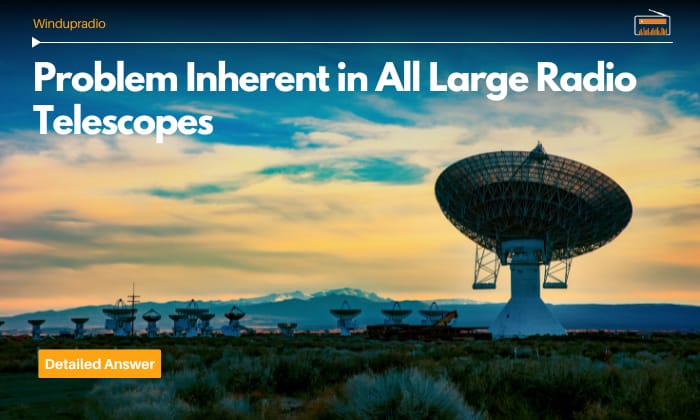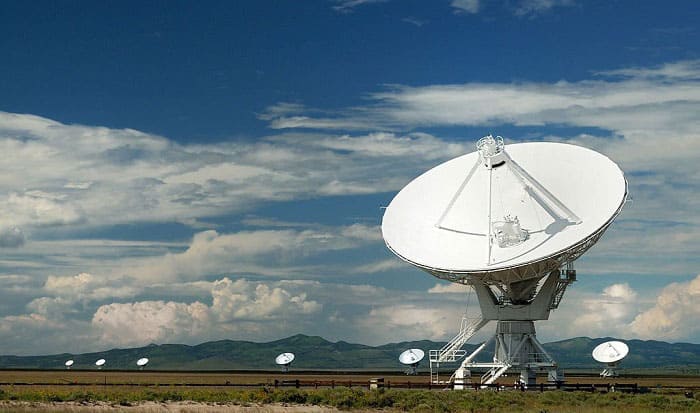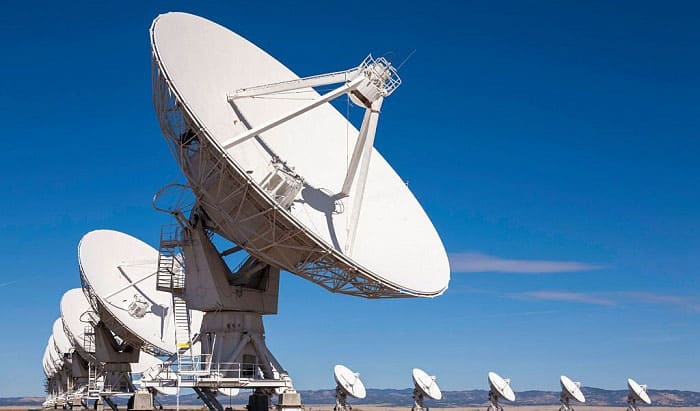Let’s play a little informative game. I’ll start by asking a question, and you choose from two possible answers.
Which of the following is a problem inherent in all large radio telescopes:
- A: Dust clouds block their wavelengths except for light
- B: Long wavelengths result in poor resolution
Table of Contents
Which of the Following is a Problem Inherent in All Large Radio Telescopes?
As previously mentioned, an inherent problem you’ll find in large telescopes is that they have long wavelengths. In turn, they have poor resolution, which can impact the overall performance of large telescopes.
To fully understand what we’re talking about, let’s break down the topic, and hopefully, it will give you a better grasp of how large telescopes work.
About Radio Telescope
First, let’s talk about what a radio telescope is. In a nutshell, a radio telescope is an astronomical instrument. It has two main components – an antenna system and a receiver. The primary purpose of a telescope is to detect the radiation of radio frequencies with wavelengths of 1mm and 10m. These wavelengths come from extra-terrestrial sources, such as galaxies and stars.
An ordinary telescope works by receiving visible light. In contrast, a radio telescope works differently. Instead, it can see radio waves from surrounding sources. The parabolic dish antenna and its arrays are responsible for the latter.
One of the things you might have noticed is that radio telescopes are built large. There’s a reason why they are designed in such a way. The size is intentional to achieve a higher angular resolution. They are receiving larger wavelengths compared to the visible wavelengths that optical telescopes are receiving.
Long Wavelengths and Poor Resolution
Because of their size, radio telescopes are known for having long wavelengths. However, the latter can also be a problem. Among others, one of the common issues is that the resolution of a telescope becomes poorer. The larger the telescope, the more precise the details they receive.
Despite this, however, it’s crucial to note one advantage of the Hubble space telescope. It has unmatched clarity despite its size. It results in an unprecedented angular resolution, which is quite difficult for large telescopes to achieve.
Reflectors in Design
Another important thing to note is that all radio telescopes are reflectors in design. They use mirrors, which are responsible for gathering more skylight and focus on smaller lenses for magnification.
In addition, you might also be wondering about what problem do refractor telescopes have that makes reflector telescopes better. Well, one of the most common problems in refracting telescopes is chromatic aberration. The latter results in different colors focusing on different points, and in turn, become blurry.
Conclusion
So, which of the following is a problem inherent in all large radio telescopes? Is it dust clouds blocking wavelengths or long wavelengths resulting in poor resolution? As we mentioned, it is the latter. The large size results in long wavelengths, but that also translates into poor resolution.

Hi, I am Amaro Frank – the Wind Up Radio’s content editor and writer. Working with Adam is so much fun, as his stories and experiences enrich my knowledge about radio communications and radio accessories. My main tasks in Wind Up Radio are building content and generating great articles on different topics around radio accessories.




